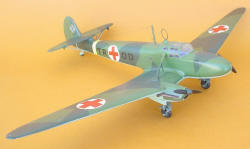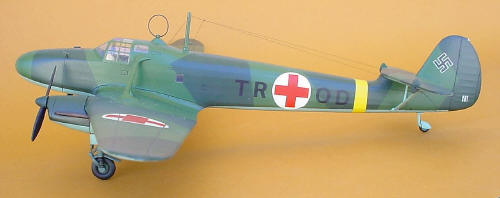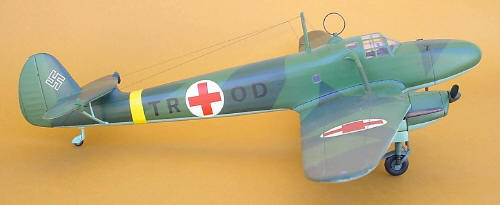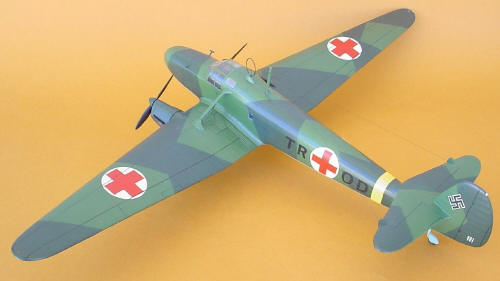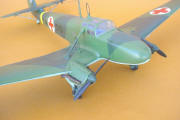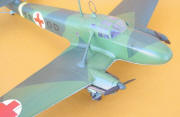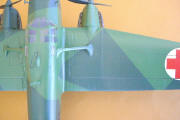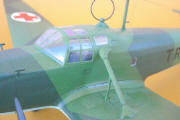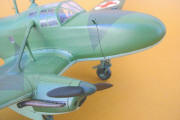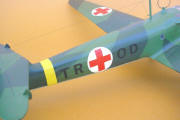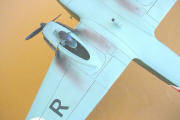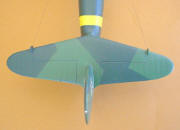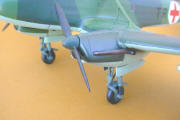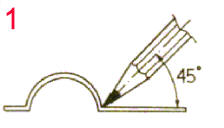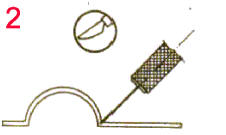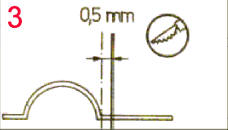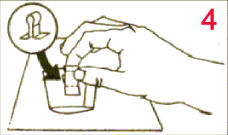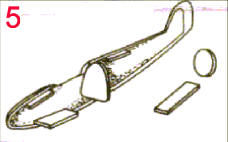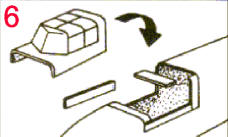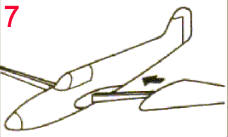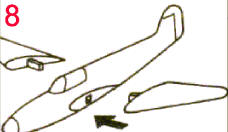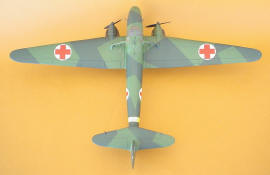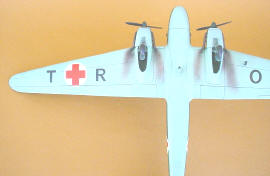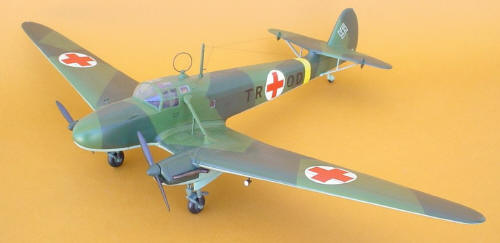 |
|||||||||||||||||
|
Airplanes |
|||||||||||||||||
|
Focke Wulf Fw 58 Weihe Building a vacuformed kit 1/48 scale |
|||||||||||||||||
|
by Marcelo Scaminaci Russo © 2003 |
|||||||||||||||||
|
Legal Notice No material from Modeler Site any Web site owned, operated, licensed, or controlled by Mario Covalski & Associated may be copied, reproduced, republished, uploaded, posted, transmitted, or distributed in any way, except that you may download one copy of the materials on any single computer for your personal, non-commercial home use only, provided you keep intact all copyright and other proprietary notices. Modification of the materials or use of the materials for any other purpose is a violation of Mario Covalski & Associated's copyright and other proprietary rights. Read More here > Legal notice The Focke Wulf Fw 58 “Weihe” ( Comet) was designed following the specifications of the RLM Technical Office for a twin-engined training aircraft. It was powered by two 240 hp Argus As 10C eight-cylinder inverted-V air cooled engines. The aircraft had a welded steel tube fuselage with mixed covering and a metal wing with fabric covering aft of the main spar. The wing of semi cantilever type was set low, with its central section braced from the tops of the engines mountings to the fuselage. Conversely, the tail plane, which was mounted forward of the fin, was strut-braced from below. The engine nacelles housed the main undercarriage units when retracted. The prototype, Fw 58 V1 (D-ABEM) made its first flight on 18th January 1935 as a six-seat light transport. The second aircraft was de Fw 58 V2, prototype for the A series. It was a military variant and was fitted with a single 7,9 mm machine guns in an open nose and a similar weapon in a dorsal position. Few aircrafts were completed before production was switched to the Fw 58 B, being fitted with a glazed nose carrying an MG 15 machine gun, with similar weapon in an open dorsal position. The B model was also capable of carrying bombs, and some planes were fitted with floats and designed Fw 58 BW.
The V11 prototype became in the Fw 58 C, the major production model. This was a light transport with a faired nose and accommodation for six passengers. One of the first examples (D-ALEX) was used by Kurt Tank as his personal aircraft. A large numbers of FW 58 C were delivered to the Luftwaffe, being used in a small numbers by many operational units for communications and light transport duties, also for the training duties. The type also saw service as ambulance, being dubbed the “Leukoplast-bomber” ( adhesive-tape bomber) by Luftwaffe personnel. The Fw 58 B and C were also exported to many foreign countries as Austria, Hungary, Bulgaria, Sweden and Argentina. Building the Weihe The kit is a rare vacuform one, manufactured by MPM, and discontinued since 11 years ago, and belongs to the first series edited by this brand, today the most important in the Czech Republic; whom for those days manufactured only vacuform kits. It’s known that this kind of models are not so appreciated by the modelers, due to the work that suppose their construction. In my particular case, I enjoy assembling these ones, because it’s the only way of adding to my collection some models that, surely, never won’t be released by injected plastic kits manufacturers, since they are not potentially commercial.
The MPM’s Weihe was very well moulded in 3 polystyrene sheets of white color; the fuselage halves and wings had crisp and accuracy lines, better than any injection mould effort. The vacuform plastic was of good quality and easy to work with. The transparent parts were moulded in acetate, and two sprues of injected plastic of brown color provided the propellers, undercarriage parts, struts for the wings, and the cockpit interior. One of the highlights, and something unusual for this kind of kits, it was the inclusion of a fret of photo etched parts, instruments panel, engine radiators, etc.
The instructions were something confused, mainly regarding the interior of the cockpit, but with some extra work I could obtain an excellent model. Unfortunately, I didn’t take shots of the assembling process of the Weihe, since I built it several years ago. Anyway, I can give you some construction tips which will be useful for the modeler that wants to construct a vacu kit:
Painting and decaling I decided painting the Weihe with an unusual livery, since I decided to build it as an ambulance aircraft. There was not in that time too much information about this kind of transports (today, the modelers enjoy excellent publications about any models), but fortunately, I found a picture in a book of the Golden Wings collection (today out of print) of an Fw 58 used as sanitary airplane on the Eastern Front, during 1943. In the mentioned picture, the aircraft carried the standard European scheme of RLM 65/70/71 and the characteristic yellow fuselage band. I used Tamiya enamels for painting my model.
The decals supplied in the kit were produced by Propagteam, and they are of very high standard. Each image was well printed with little carrier film. The Red Cross emblems were painted using masks. The entire model was sprayed with two coats of Gunze Sangyo semi gloss varnish, giving to the model a good overall finishing. Conclusion I have really enjoyed making this kit. Overall I would certainly recommend this to any one with a bit of building experience. It could be a good choice for a first time vacuform builder, as most of the parts fitted as well as any injection moulded kits you are likely to build. Obviously, it always will be easier to cut the pieces of their sprues and simply glue them to our model. But in the case of this kind of kits, the modeler should appeal to his different abilities. Despite of this, in my opinion, the vacuform kits constitute the real essence of the modeling: we can enjoy building a model that, surely, we will never see in injected plastic.
Support us ordering our notes in PDF > Here |
|||||||||||||||||
